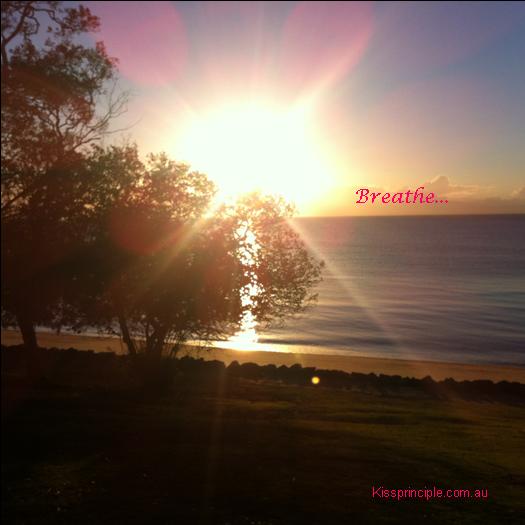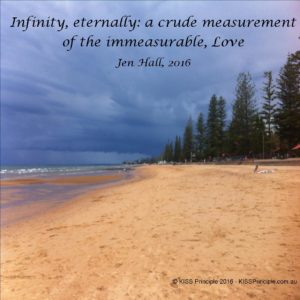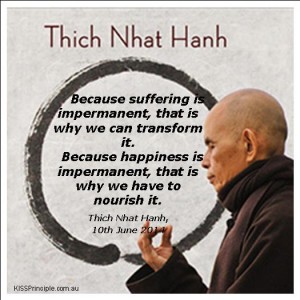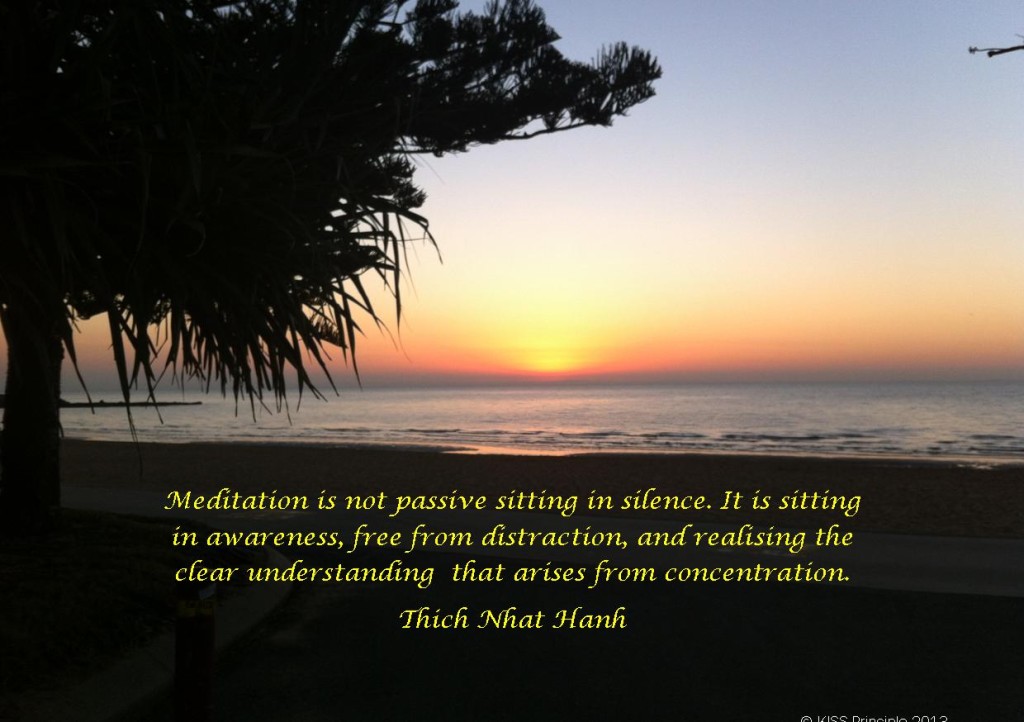I was diagnosed officially with Ankylosing Spondylitis (AS) in 2013 at 52 years of age after a long history since childhood of back and hip pain, and mobility issues. I have suffered chronic bilateral Uveitis since the age of 17, resulting in blindness in one eye.
In 2015 as part of my undergraduate degree in Psychological Science I was lucky enough to complete a unit of study in Positive Psychology at Maastricht University in The Netherlands. I’m sure you can imagine how the opportunity to study overseas with a highly ranked university in this specific field was a positive experience in itself: possibly related to the curriculum related compulsory excursions to a Belgian chocolatier, and well known Belgian brewers Stella Artois with “mandatory” sampling in both instances.
As part of the assessments for the course we had to design a research study relating to the field of positive psychology. Mindfulness and meditation fall neatly under the Positive Psychology umbrella as well as CBT and other cognitive therapy models. This area of psychology appealed to me after many years of life changing experiences relating to different forms of meditation, and understanding through experience of the impact of “realistic” positive thinking. I had been engaging in practices of optimism, positive thinking, and meditation methods for many years before I studied mainstream psychology.
The study I designed was related to measuring the impact of regular mindfulness meditation practice on circulating inflammatory markers in the blood stream. In the course of designing this research study I read many research articles that indicated significant results of the impact of stress on physical well-being, as well as the impact of taking positive action in working with stress through meditation, increasing healthy lifestyle habits, and increasing optimism.
One study stood out to me as acknowledging a powerful contributor to decreased mental health resulting in decreased physical health, specifically from increased inflammation. In this 2012 study by Gouin et al., it was noted that naturally occurring daily stressors increased levels of inflammatory markers IL-6 and CRP. It was also noted that exposure to multiple stressors was associated with elevated inflammatory markers. This study quoted similar findings from previous studies. So these findings beg the questions “what are our daily stressors unique to our circumstances?” and “how do we sustainably reduce chronic daily stress?’.
When people are living with chronic illness there is naturally daily stress: whether it’s physical issues like mobility, feeling unwell, coping with daily tasks of house work or caring for families, side effects from medication, adhering to special diets and exercise; or practical, mental and emotional issues like navigating medical appointments, worries about the future, just to name a few. Navigating these issues can create feelings of being under pressure at times, which according to the research, literally inflames the health condition, and a vicious cycle ensues. How can we introduce positive action and optimism on a daily basis without creating yet another pressure filled “must do”?
There have been many studies about the impact of different forms of meditation on physical and mental health, literally changing the brain, increasing grey and white matter. More studies have shown a positive impact on pain levels and associated stress that naturally accompanies chronic pain experience: this includes positive impact on experiences of anxiety and depression. Mindfulness Based Stress Reduction (MBSR) was introduced to medicine via the introduction into pain clinics in 1979 by Nobel Laureate Jon Kabat-Zinn. Transcendental Meditation as structured by Maharishi Mahesh Yogi is another form of meditation that has been extensively researched by the scientific community with significant results in improvements in physical and mental health. Other simple methods of enhancing physical and mental well-being have been studied and widely embraced in the professional health community.
Studies indicate strong connections between improved mental and physical health by spending time outdoors during the daylight hours and where possible in sunshine (with care around sun exposure), and in natural settings. Visiting local parks, rivers, lakes, the beach, walking in the bush, are all great ways to improve well-being for those of us who are quite mobile . Spending 30 to 60 minutes out in the fresh air in nature, moving your body within your capacity, is a great recipe for mood enhancement. For those less mobile finding a space outdoors where you can do some stretches, enjoy sitting in a garden or balcony, cultivating and caring for some pot plants, can be simple ways to connect with nature. As you read these suggestions what comes to mind that you could experiment with in your world?
Often people embark on healthy eating as a healing option. Great idea. However, if you’re like me, sticking to a rigid eating plan that removes lots of favourite foods or drink can feel highly stressful; the stress outweighing the proposed health benefits. Often there can be prescriptive exercises that are important to do but motivation can be low when you’re already feeling unwell and in pain. So how do we change from habits that could prove detrimental, to healthy life enhancing habits, without creating another daily stressor?
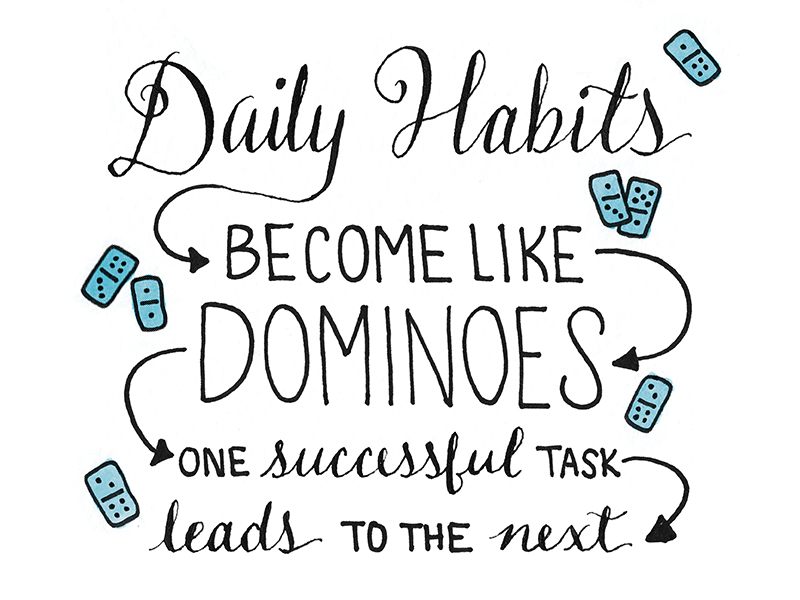
I found ways to incorporate changes in small ways over time. Experimentation to see what worked, what I was actually willing to do depending on how I felt, was my method. I made changes in my diet gradually through finding out basic healthy diet information that would apply to anyone and making small adjustments through experimentation. I found it much easier to introduce small changes, especially when catering for a family who had eclectic taste buds.
Yoga was a practice I found helpful: incorporating breath work and stretch poses in a most basic form helped me to increase my chest expansion from half of what it should have been back to a normal range over about two years. The impact on my mobility and my mental well-being when exercising with care helped get me back on to a road of preventative care.
I learned to incorporate some stretches into my daily showering routine and when moisturising my skin. I raised my rotary clothes line to its highest level to make every bend and stretch count. On the days where life is more physically challenging I practice acceptance and move within my ability that day with an attitude of acceptance. But I do keep moving.
I learned to practice meditation with a teacher to learn how to focus, to sit with, and build a tolerance, to pain. Meditating with pain often led me to need less pain medication without detriment to my well-being. The body scan meditation as taught in many mindfulness practices including the MBSR is a practice of restful observation of body sensations, including pain.
It’s important to note an underlying theme that over time I was able to embody throughout this day by day journey. Self-compassion incorporating kindness and often humour towards my self was a key attribute and attitude that I learned over time to bring into just about every experience of pain, change, stagnation, and difficulty. The above journey I have described took time to develop. It took many trials and some errors in judgment. It took support from the medical profession and searching until I could find medical professionals who were willing to work with me in my own experience rather than group me into a general label.
Conditions like AS and auto immune challenges take time to understand. Our own experience, circumstances, thoughts, and feelings about our condition needs our own care and attention to help us understand our own needs to live with the best quality of life that we can. Finding ways to minimise stress appears to be an important option that we can experiment with as part of our health and wellbeing on a daily basis; one moment at a time. If you would like to try mindfulness meditation, I have two free audio downloads and some information sheets available on my website: Mindfulness of Breath, and a Body Scan meditation. These two exercises are the foundation for developing a mindfulness practice.
(As published in AStretch – Ankylosing Spondylitis Groups of Australia’s Newsletter newsletter)

